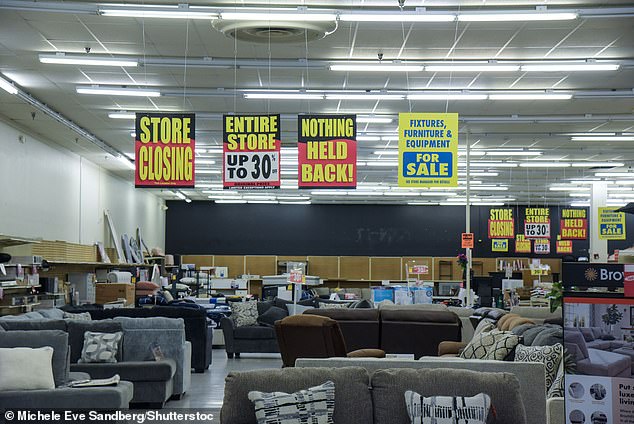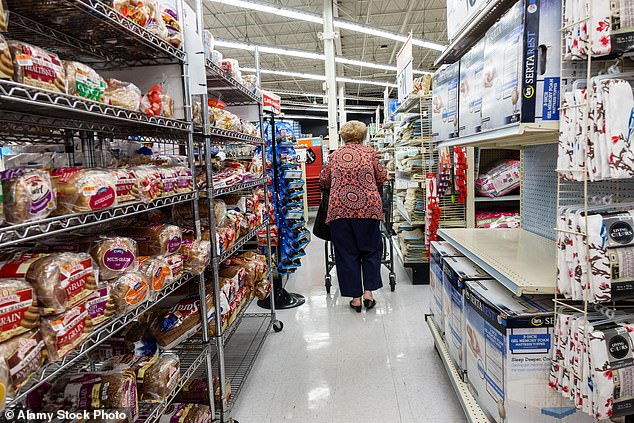US discount retailer with 1,400 stores files for bankruptcy as stock halves in value in minutes
Home goods discounter Big Lots filed for bankruptcy this morning, raising questions about the future of its 1,400 stores.
Bosses hope to sell the business to private equity firm Nexus Capital, but first the company will have to cut costs by closing more stores and pay down its huge debts.
In the meantime, Big Lots, which said three months ago it had “significant doubts about the company’s ability to continue as a going concern,” has secured $707.5 million to keep the company afloat.
Bankruptcy was “the inevitable end” for a chain that has seen sales decline for 16 consecutive quarters, retail analyst Neil Saunders said.
Saunders, head of retail at GlobalData, pointed to a key reason why shoppers are steering clear of Big Lots: it’s poor value for money, which “undermines the retailer’s key differentiator.”
Home goods discounter Big Lots is reportedly on the brink of bankruptcy after years of declining sales and store closings (Pictured: A store closing in Manassas, Virginia)
The Ohio-based company announced last month that it would close more than 300 of its nearly 1,400 stores in the US.
Alarm bells rang at the retailer when on Friday Big Lots has delayed the release of its financial results in a highly unusual move
Over the past week, the tumors had grown so large that Big Lots was on the brink of bankruptcy after years of declining sales.
Saunders said Big Lots has two main problems: “First, Big Lots doesn’t always offer value for money.
‘Many of the items they sell are not very expensive and not very expensive either, but similar items can often be found for much less at other stores, including Walmart.
‘At a time when consumers are increasingly comparing prices, this is leading to a loss of business and loyalty at Big Lots.
“It also undermines Big Lots’ key differentiator: value for money. It also raises the question of what exactly the retailer is bringing to the market.”
He added: ‘The other problem is the range [of items on offer] is very messy and confusing, which is partly due to the way the company operates.
‘However, there is far too much choice and not nearly enough treasures to entice consumers. This makes for an unsatisfactory shopping experience, especially compared to other players operating in the discount sector, such as off-price retailers.’
He pointed out that Big Lots might have been able to overcome these challenges if it had had enough cash in the bank.
“Unfortunately, that is not the case,” he added. “In the last reported quarter, the company had $573 million in long-term debt and accruing interest payments.
“Bankruptcy will allow Big Lots to attempt to put itself on a more stable footing. This includes restructuring debt and closing underperforming stores.
‘The sale to Nexus Capital, which is a kind of stalking horse bid, provides certainty that the chain will survive in whatever form.’
Nexus, a so-called stalking horse bidder, will buy Big Lots if no better offer is made.
Big Lots shares halved in value in premarket trading Monday morning to 26 cents. This comes after it also fell 50 percent to 56 cents last week after news of the bankruptcy fears broke.
CEO Bruce Thorn warned during the company’s last earnings report three months ago that Americans were cutting back on big-ticket items, particularly furniture, which was hurting sales.
The chain has seen its revenues decline consistently over the past 10 quarters, losing a staggering $132 million in the first three months of 2024.
In August, Big Lots announced it would close as many as 315 stores in states including Connecticut, Massachusetts, Michigan, New Hampshire and Vermont.
The latest closures come on top of 40 other stores that closed their doors in June.
That means the Columbus, Ohio-based chain will lose a quarter of its 1,392 stores this year.
On Reddit, Big Lots store managers are complaining that they are increasingly receiving inventory that customers are not buying.
“This past month we have received four of the largest trucks we have seen all year, three times the normal number,” one wrote.
The warehouse is almost full and no one from [it] is selling.’
Another posted: ‘Isn’t that the weirdest thing? So much stuff, but none of it is what people want.’

The store sells furniture and household items in addition to toys, beauty products and groceries

Big Lots is known for its discounted items
The troubles for Big Lots come amid a widespread “retail apocalypse,” with stores struggling with declining consumer traffic and increasingly tight margins.
In the first four months of 2024, there were almost 2,600 store closuresIf this trend continues, nearly 8,000 people will have died by the end of the year.
Bargain stores like Big Lots and dSupermarkets in particular have been hit hard.
For example, in April, 99 Cents Only announced that it would close all 371 of its locations in California, Texas, Arizona and Nevada.
Meanwhile, there are 1,000 Family Dollar stores and sister company Dollar Tree will close over the next three years.
In recent months, Walmart has also closed three of its underperforming locations, while Best Buy closed ten in march.
Additionally, Macy’s is closing 150 stores over the next three years – including the closure of 55 stores this year.
Drugstore Rite Aid has said it will close more than 800 stores after declaring bankruptcy. Most of these cases occurred in just two states, with customers in Michigan and Ohio flocking to find a new pharmacy.
